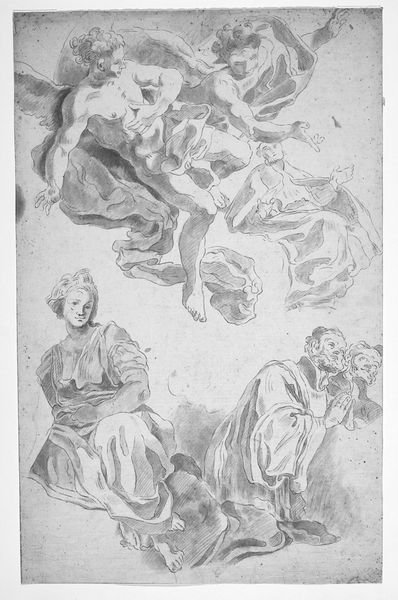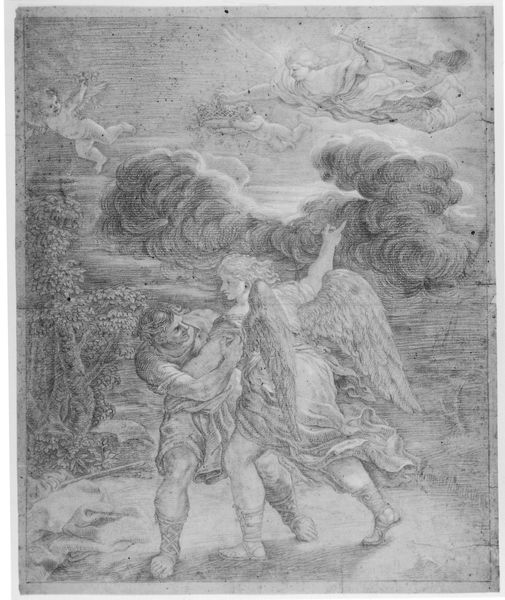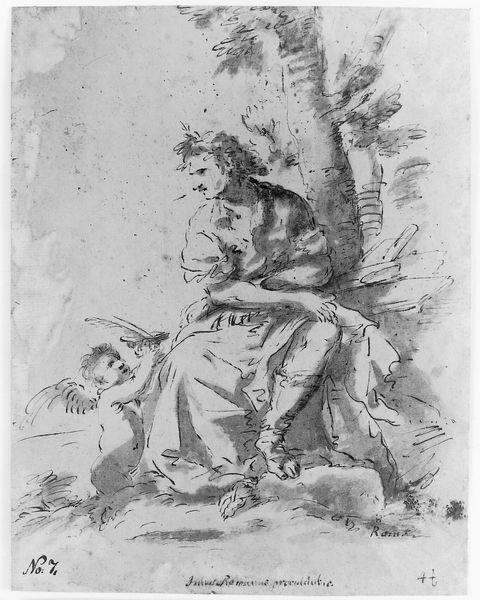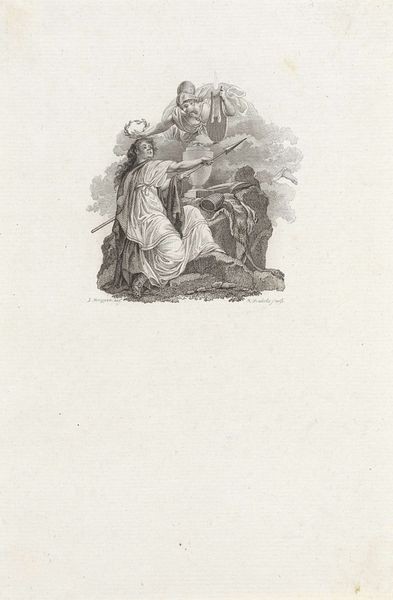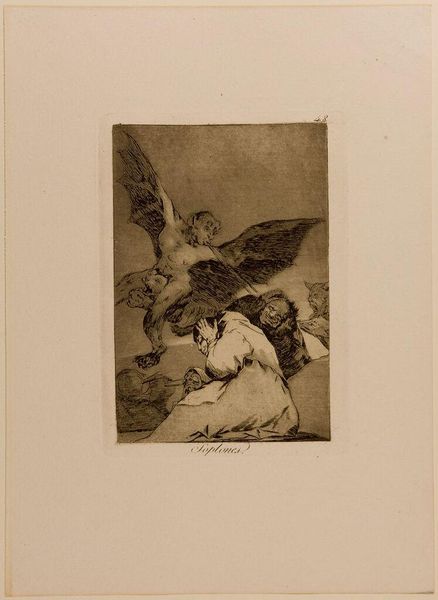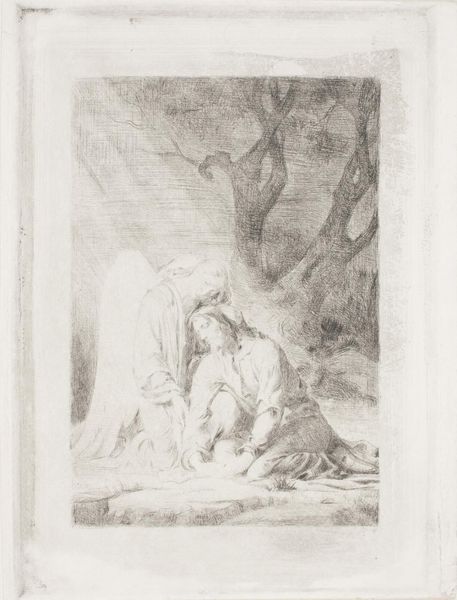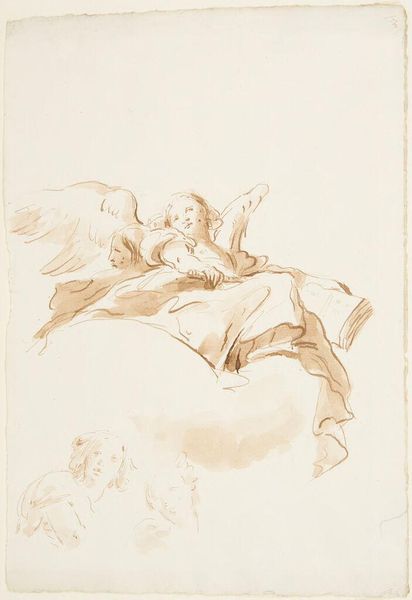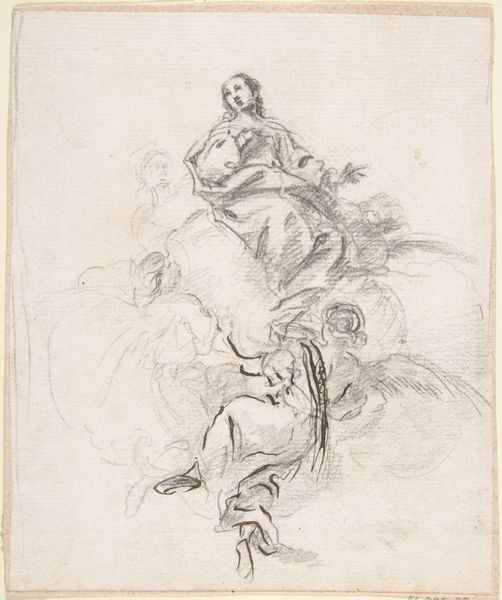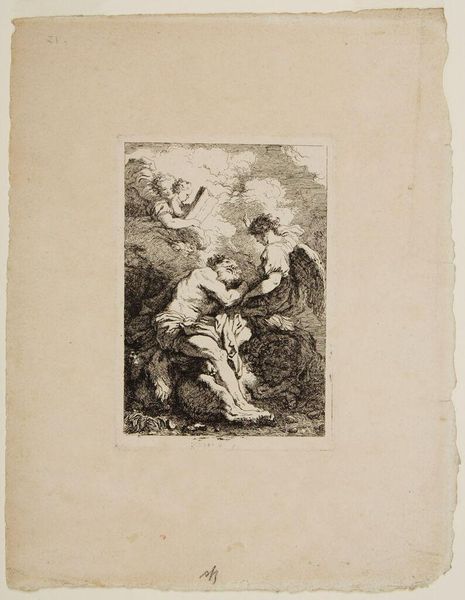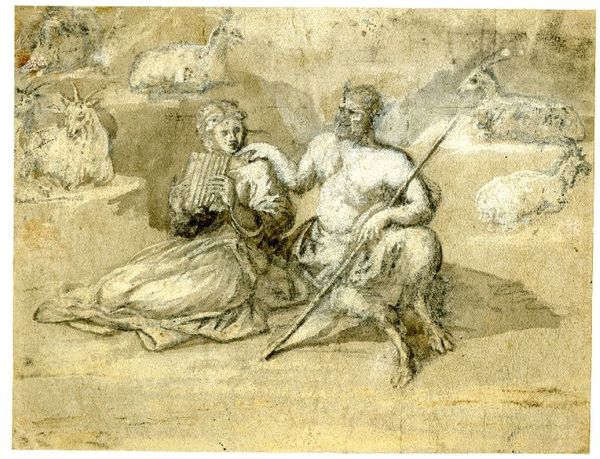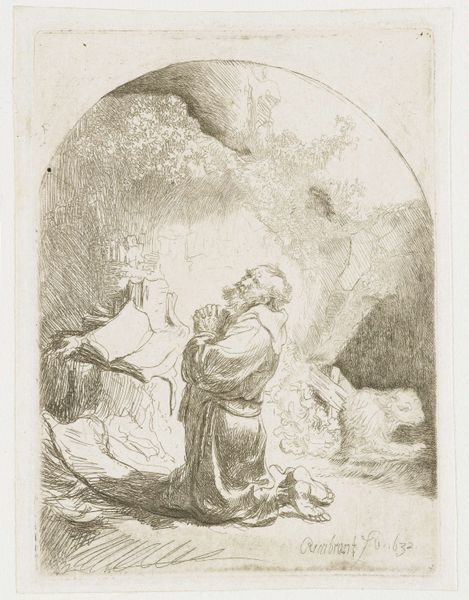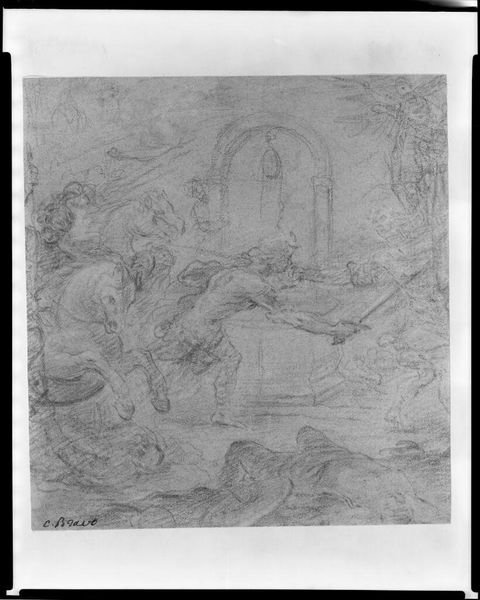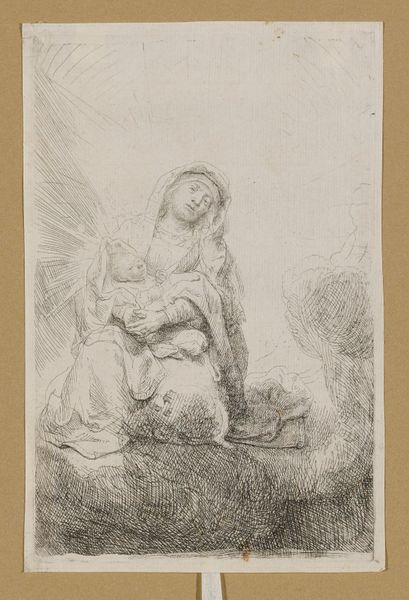
drawing, pencil
#
drawing
#
landscape
#
figuration
#
pencil drawing
#
pencil
#
academic-art
Dimensions: 201 mm (height) x 153 mm (width) (bladmaal)
Curator: Immediately, I’m struck by the ethereal quality, the softness of the light. It’s almost as if the figures are dissolving into the landscape. Editor: That's certainly a visceral reaction to the pencil work, and I can see how you might experience the feeling of the work that way. What we're looking at is "The Agony in the Garden" by Giovanni Balducci, probably done sometime between 1550 and 1631. Currently, this drawing is held at the SMK, or Statens Museum for Kunst. The drawing style has characteristics of academic art. Curator: Academic, yes, but beyond that I am drawn into what the title highlights—agony. It feels raw, not only in its sketched form, but emotionally vulnerable, depicting figures seemingly trapped between the terrestrial and the divine, hinting at internal struggle with political overtones and social injustice perhaps, since many are called upon to sacrifice with little agency. The context surrounding its creation surely bears scrutiny... Editor: Well, formally, the composition strikes me as quite deliberate, using the light to create focal points. If you look at how Balducci balances the darker lines forming the figures against the untouched paper, you see skillful semiotic coding playing out to communicate meaning. Curator: Do you think that formal balance addresses the turbulent implications behind agony itself? In examining visual culture through political lenses, especially in religious works such as these, the subjects have to undergo extreme mental turmoil rooted in the collective struggle of society and a call to accountability that might lead to positive reforms, but nonetheless through strife... Editor: Agony manifests on various levels here. Structurally, consider how the angel at the top mirrors Christ below, that echo resonating across the entire drawing through pose and tonality, creating unity out of torment. The whole image functions as a sign. Curator: The torment certainly transcends aesthetic admiration! By addressing and engaging historical narratives and socio-political themes of its time—through identity, class, or gender, among many axes, that can better provide comprehensive insight... Editor: I agree that cultural discourse matters; it’s an undeniable part of the experience. Looking purely at form, however, can unveil subtle tensions that add nuance. Curator: Very well! Ultimately it reminds us of shared humanity that lies even beyond grief, and how a reevaluation of structures through different viewpoints has potential. Editor: A complex piece, offering much, whichever perspective we take.
Comments
No comments
Be the first to comment and join the conversation on the ultimate creative platform.
